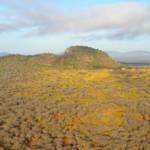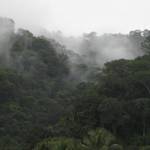Atlantic Forest Biosphere Reserve
1991 CE • Brazil
". . . It covers around 90 000 km.², along 3 000 km of the Atlantic Coast, covering 17 different Brazilian states. Although the remaining Atlantic forest (some 10% of the original vegetation) is rather homogeneous, the social diversity is very high as it includes large urban centers (Rio de Janeiro, Florianópolis, São Paulo, etc.) and also many small traditional communities of peasants, small-scale fishermen and forest extractive groups . . . These very rare Atlantic Forest remnants and associated ecosystems such as mangroves, salt marsh scrublands as well as sand spits and upland grasslands are under pressure from the highest populated areas in the country. The Mata Atlântica Biopshere Reserve is a biodiversity hotspot. Estimates say that 55% of tree species and 39% of mammal species are endemic to this region. It is home to 15% of Brazilian primates, including the golden lion tamarin (Leontopithecus rosalia), and also jaguars (Panthera onca)"
Source: “Mata Atlântica Biosphere Reserve, Brazil.” 2019. Unesco.Org. February 14, 2019. https://en.unesco.org/biosphere/lac/mata-atlantica.
Image: CC BY-SA 3.0, via Wikimedia Commons


Learn about Maya Lin’s fifth and final memorial: a multi-platform science based artwork that presents an ecological history of our world - past, present, and future.

Discover ecological histories and stories of former abundance, loss, and recovery on the map of memory.

Learn how we can reduce our emissions and protect and restore species and habitats – around the world.

See how art can help us rethink the problems we face, and give us hope that each one of us can make a difference.

Help make a global memorial something personal and close to home. Share your stories of the natural world.


